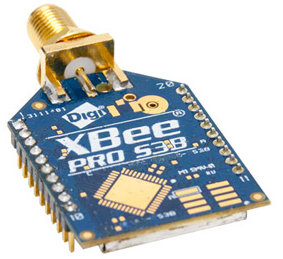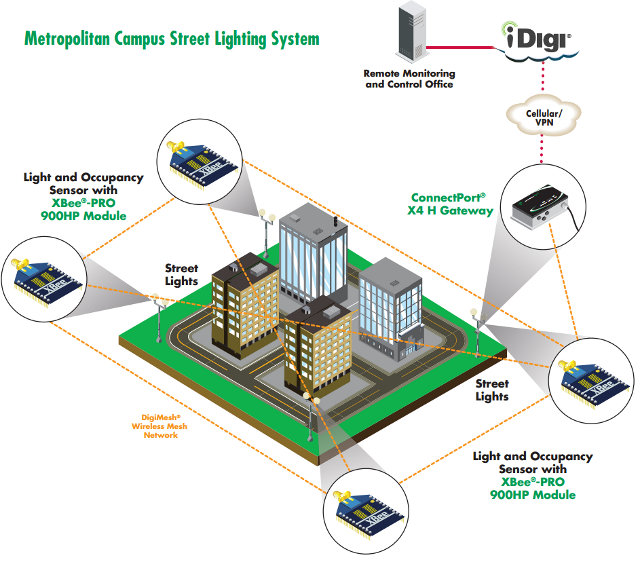Digi International has recently announced the XBee-PRO 900HP RF embedded module based on ADF7023 transceiver and Energy Micro Cortex-M3 EFM32G230 MCU @ 28 MHz. The company claims the module supports a line-of-sight range of up to 45 km with a high-gain antenna and data rates of up to 200 Kbps.45 km is not quite enough to communicate in space (100 km), but that’s still a pretty good range. Indoor / urban range is up to 600m.
 Here are the hardware specifications of XBee-PRO 900HP module:
Here are the hardware specifications of XBee-PRO 900HP module:
- Processors – ADF7023 transceiver and Cortex-M3 EFM32G230 @ 28 MHz
- Frequency Band – 902 to 928 MHz, software selectable channel mask for interference immunity
- Antenna Options – Wire, U.FL and RPSMSA
- RF Data Rate – 10 Kbps or 200 Kbps
- Indoor/Urban Range – Up to 2000 ft (610 m)
- Outdoor/ Line-Of-Sight Range – Up to 9 miles (14 km) w/ dipole antenna; Up to 28 miles (45 km) w/ high-gain antenna
- Transmit Power – Up to 24 dBm (250 mW) software selectable
- Receiver Sensitivity – -101 dBm @ 200 Kbps, -110 dBm @ 10 Kbps
- Data Interface- UART (3V) and SPI
- GPIO – Up to 15 Digital I/O, 4 10-bit ADC inputs, 2 PWM outputs
- Networking Topologies – DigiMesh, Repeater, Point-to-Point, Point-to-Multipoint, Peer-to-Peer
- Spread Spectrum – FHSS (Software Selectable Channels)
- Supply Voltage – 2.1 to 3.6 VDC
- Power – Transmit Current – 215 mA, Receive Current – 29 mA and Sleep Current 2.5 uA
- Regulatory Approvals:
- FCC (USA)
- IC (Canada)
- C-Tick (Australia)
- Anatel (Brazil) – Pending
The module appears to consume very little power, as transmit current is 215 mA and sleep current 2.5 uA, which means that with 15 minutes interval data, 2 AA batteries could, in theory, last a year (Source: Twitter). Firmware can be updated over-the-air (OTA) via other XBee-PRO 900HP modules or iDigi Device Cloud service. The XBee-PRO 900HP modules does not require no programming and can be configured via AT command set or Digi’s X-CTU software.
The diagram below shows an example use in a campus to control the street lights using the RF modules and light and occupancy sensors. Data is then transmitted to a home energy gateway, which then sends data back to a remote monitoring and control office via a cellular or VPN connection.

There are 12 modules available (configuration depends on the data rate, antenna option and country) with price ranging between $39 and $42. Digi also provide the 900 MHz XBee-PRO® DigiMesh 900 development kit ($299) which include 4 XBee-PRO DigitMesh modules (1x w/ RPSMA antenna, 1x w.U.fl connector and 2 w/ a wire antenna), 4x USB development board and USB cables, 2x 900 MHz RPSMA antennas, and 2 power adapters. This kit can allow you to setup a peer-to-peer mesh network with the DigiMesh protocol (peer-to-peer networking topology).
Further information is available on Digi XBee-PRO 900HP page.

Jean-Luc started CNX Software in 2010 as a part-time endeavor, before quitting his job as a software engineering manager, and starting to write daily news, and reviews full time later in 2011.
Support CNX Software! Donate via cryptocurrencies, become a Patron on Patreon, or purchase goods on Amazon or Aliexpress




